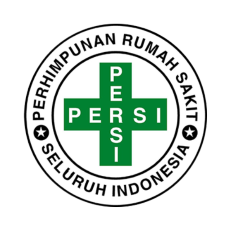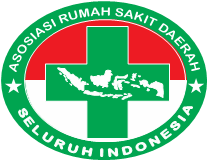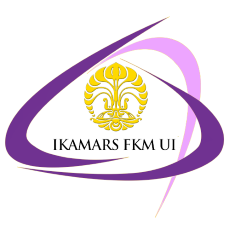Contents
- How To Submit An Article
- General Submission Rules
- Structure of Manuscript
- Submission Preparation Checklist
- Privacy Statement
- Article Processing Charge (APC)
How To Submit An Article
- Click "My Account" located at the top of the Jurnal ARSI : Administrasi Rumah Sakit Indonesia website.
- Register for an account if you don’t have one yet, and make sure to verify your account through the email provided.
- Once logged in, click "Submit Article" located on the right side of the page.
- Follow the submission guidelines provided and complete all required article metadata. Please ensure that the author’s name and affiliation are written in full. A correct example would be: Sedayu Latuna, Department of Health Policy and Administration, Faculty of Public Health, Universitas Indonesia, Depok, Indonesia. (Ensure that the affiliation is written in the same language used in the submitted article, whether it is in English or Indonesian).
- Ensure that the article being submitted complies with the Author Guidelines.
- Make sure all required fields are correctly filled out, including the article title, abstract, keywords, document type, references, and cover letter.
- After all the information has been accurately entered, click "Submit" to complete the submission process.
General Submission Rules
In submitting manuscripts to Jurnal ARSI : Administrasi Rumah Sakit Indonesia, authors should take special note that the manuscript must conform to all Jurnal ARSI : Administrasi Rumah Sakit Indonesia style requirements. Authors should follow the requirements for citations and references, figures, and tables. The manuscripts that do not follow the requirement of Jurnal ARSI : Administrasi Rumah Sakit Indonesia style may be returned to authors for modification.
Submitted articles cannot have been previously published, nor be forthcoming in an archival journal or book (print or electronic). Please note: "publication" in a working-paper series does not constitute prior publication. In addition, by submitting material to Jurnal ARSI : Administrasi Rumah Sakit Indonesia, the author is stipulating that the material is not currently under review at another journal (electronic or print) and that he or she will not submit the material to another journal (electronic or print) until the completion of the editorial decision process at Jurnal ARSI : Administrasi Rumah Sakit Indonesia. If you have concerns about the submission terms for Jurnal ARSI : Administrasi Rumah Sakit Indonesia, please contact the editorial office contact.
Authors should refer to the Jurnal ARSI : Administrasi Rumah Sakit Indonesia templates. The author must fill in the 'statement letter' for publication requirements in Jurnal ARSI : Administrasi Rumah Sakit Indonesia.
The file can be downloaded below.
 Manuscript Template
Manuscript Template
 Statement Letter For Submissions
Statement Letter For Submissions
Structure of Manuscript
The manuscript's content should be organized in the following structural order: Title in Bahasa Indonesia or English, abstract, keywords, introduction, method, results, discussion, conclusion, recommendation, ethical clearance, conflict of interest, authors’ contribution, acknowledgment (if any), and references. Authors' names and affiliations should be deleted to ensure double blind peer review of the paper during the review process.
- Title The title pages should contain the following items:
- Manuscript titles written in Bahasa Indonesia or English should not to exceed 20 words, not contain abbreviation or numerical values. Titles should not be summarization of results or conclusion but describe the research or topic of the paper. Written in Times New Roman (12pt, bold, centered).
- The title page should include the title of the manuscript only. The names of authors and affiliations should be deleted to ensure double blinding of the paper during the peer review process.
- A short running title, not to exceed 50 characters and spaces.
- Abstract The abstract is written in Bahasa Indonesia and English, with a word limit of 100 to 250 words. It should be prepared in one paragraph and cover the problem, objectives, method, results, discussions, and conclusions. References should not be written in these parts of the manuscript. Written in Times New Roman (10pt, Justify, Italic).
- Keywords The keywords should contain the following items:
- Keywords must be specific and represent the content of the article. The selection of keywords should be done carefully to reflect the concept of the article. Keywords can be a single word or a phrase; phrases are recommended for greater specificity.
- Abbreviations can be used in keywords commonly accepted in the relevant field.
- A maximum of 5 keywords is allowed, separated by semicolons (;), for example: Internal Audit Charter; Program Evaluation; Policy Implementation; Public Health Center; Non-Communicable Diseases. (10pt, Times New Roman, Italic).
- Body Text The manuscript should be written using MS Word in structured order, from the introduction to the references. The manuscript should be prepared using Times New Roman font at 12-point size, double-spaced, and all margins set at 2,5 cm. The main text (not including the Abstract, References, Tables, and Figures) should be 3000-5000 words. In total (Main Text, Abstract, References, Tables, and Figures) should ideally be no more than 15 pages.
- 4.1. Introduction The introduction contains background, a brief review of the relevant literature, and the research objective. After presenting global or national data related to the topic of the article or the basis of the study with a broad perspective, the introduction must also contain: (1) State of the Art/ overview of previous research (especially from scientific journal literature in the last 10 years) to support/strengthen the justification statement for the contribution of novelty, not a literature/theory review, and not a source, (2) Gap Analysis / Novelty Statement or Statement of the contribution of the novelty of the article, and (3) research objectives/study objectives at the end of the introduction.
- 4.2. Method Methods include the design, population, sample, data sources, techniques/instruments of data collection, and data analysis procedures. Existing and published methods can be explained briefly and quoted appropriately with references. In contrast, new and relevant modified methods must be described in detail, and details of existing methods must not be repeated or just copied and pasted from reference sources. Any licenses used for research data analysis tools must also be mentioned.
- 4.3. Result Results are research findings and should be clear and concise without opinions. Tables and figures are put in the result. Tables and/or figures are limited to only six with a short title. The table/figure should be typed in a single space and be numbered consecutively according to the appearance of the text. Avoid detailed descriptions of all the data.
- 4.4. Discussion Discussion is part of precisely and argumentatively corresponding research results with theory and earlier relevant findings. The discussion should explore the significance of the results, not merely repeat them. The author can convey study limitations and recommendations for further research. The following components should be discussed: How do your results relate to the original question or objectives outlined in the Introduction section (what)? Do you provide an interpretation scientifically for each of your results or findings presented (why)? Are your results consistent with what other investigators have reported (what else)? Or are there any differences?.
- 4.5. Conclusion Conclusions are part of answering the research problem that does not exceed the capacity of the findings. The conclusion should address the purpose of the study. In this section, you can explain how the study can benefit the field regarding the current state of knowledge. With a clear conclusion, reviewers and readers will be able to assess the work and decide whether or not it is worth publishing in the Journal. Do not repeat the abstract or list the results of an experiment. Please provide a clear scientific justification for your research and indicate its possible applications and extensions. Conclusions must not contain references to the cited literature.
- 4.6. Recommendation The recommendation section should written with precise steps that will be more meaningful than general recommendations. Suggestions must refer to the objectives and conclusions and be made with the narrative, logical, and appropriate. Suggestions written with the proper steps will be more meaningful than general suggestions. Remember that suggestions must be practical, meaning they can be implemented. Give advice on what policies should be taken. Convey what steps should be taken, what the consequences are regarding resources (including funding), who acts as what, who should take the lead in overcoming the problem, and so on. The author can also suggest future experiments and/or highlight those underway.
- 4.7. Ethical Clearance Authors must include the ethics approval number from the Ethics Research Committee provided for all types of research using both primary and secondary data. Attach the certificate number that the research conducted has passed the ethics review process according to applicable rules and include the name of the institution that processed the ethics review.
- 4.8. Conflict of Interest Conflict of Interest (COIs, also known as ‘competing interests’) occur when issues outside research could be reasonably perceived to affect the neutrality or objectivity of the work or its assessment. Authors must declare all potential interests – whether or not they actually had an influence – in the conflicts of interest section, which should explain why the interest may be a conflict. If there are none, the authors should state: “The author(s) declare(s) that there is no conflict of interest regarding the publication of this article”. The authors are responsible for co-authors declaring their interests. Declared conflicts of interest will be considered by the editor and reviewers and included in the published article.
- 4.9. Authors’ Contribution This section explains the contributions made by each author to the research and is required in this journal. The authors’ contribution refers to CRediT (Contributor Roles Taxonomy). CRediT allows authors to share an accurate and detailed description of their diverse contributions to the published work. For transparency, we encourage authors to submit an author statement in the manuscript outlining their contributions to the paper using the relevant CRediT roles:
- Conceptualization: Ideas; formulation or evolution of overarching research goals and aims.
- Methodology: Development or design of methodology; creation of models.
- Software: Programming, software development; designing computer programs; implementation of the computer code and supporting algorithms; testing of existing code components.
- Validation: Verification, whether as a part of the activity or separate, of the overall replication/ reproducibility of results/experiments and other research outputs.
- Formal analysis: Application of statistical, mathematical, computational, or other formal techniques to analyze or synthesize study data.
- Investigation: Conducting a research and investigation process, specifically performing the experiments, or data/evidence collection.
- Resources: Provision of study materials, reagents, materials, patients, laboratory samples, animals, instrumentation, computing resources, or other analysis tools.
- Data Curation: Management activities to annotate (produce metadata), scrub data and maintain research data (including software code, where it is necessary for interpreting the data itself) for initial use and later reuse.
- Writing - Original Draft: Preparation, creation and/or presentation of the published work, specifically writing the initial draft (including substantive translation).
- Writing - Review & Editing: Preparation, creation and/or presentation of the published work by those from the original research group, specifically critical review, commentary or revision – including pre-or post-publication stages.
- Visualization: Preparation, creation and/or presentation of the published work, specifically visualization/ data presentation.
- Supervision: Oversight and leadership responsibility for the research activity planning and execution, including mentorship external to the core team.
- Project administration: Management and coordination responsibility for the research activity planning and execution.
- Funding acquisition: Acquisition of the financial support for the project leading to this publication.
- 4.10. Acknowledgment Recognize those who helped in the research, especially funding or grant supporters of your research. If required, include individuals who have assisted you in your study, i.e., proofreaders, typologists, and suppliers who may have provided materials. Do not acknowledge one of the authors' names.
- 4.11. References References should be prepared using Harvard styles. Please use Reference Manager Applications like EndNote, Mendeley, Zotero, etc. Cite only scientific publications that you read and current journal references. The number of references in a journal article is a minimum of 20 from journals published in the last 10 (ten) years, especially for comparative reference of previous or existing research. Reference sources should come from articles in scientific journals, proceedings, dissertations, theses, books containing research results, etc., which result from direct research, not just compilation results from the primary literature (theory or concept reference books). Check each reference against the original source (author name, volume, publication, year, DOI number).
Example of Gap Analysis:
“Many studies have attempted to optimize the output of the Malaria program by empowering the local communities and non-government organizations simultaneously (Chang, 2020; Andrew et al., 2019; Zorte and Plaza, 2017). Meanwhile, local community activities and social backgrounds in fields vary, which leads to variations in the output achievement (Zahra, 2021; Marck, 2019). However, only few studies were conducted to evaluate the effects of the number of activities and social determinants of the local community or health volunteers. “
Tables
The table should be numbered consecutively according to the appearance of the text (1, 2, dst.). The font size in the table is 10pt, Times New Roman, 1 space (For table title: 10pt, Times New Roman, Bold, 1 space). Captions should be brief, clearly indicating the purpose or content of each table. Borders of tables are only horizontal lines and without vertical lines. Please ensure that all tables are referenced within the main text. Example of written in the text: i.e..... (Table 1); Table 1 shows ...; As presented in Table 1, …
Figures
All photographs, graphs, and diagrams should be referred to as a 'Figure' and numbered consecutively (1, 2, etc.). Multipart figures should be labeled with lowercase letters (a, b, etc.). For figures title: 10pt, Times New Roman, Bold, 1 space, and placed in under figures. The figure should be provided in high-resolution, clear, and easy-to-read text (if applicable). Please insert scale bars directly in the figures. Please provide a detailed legend (without abbreviations) for each figure, refer to the figure in the text, and note its approximate location in the margin. Black and white or color images are allowed. The figures should have a resolution of 1,000 dpi. Figures prepared in Excel should be sent along with their data source. Please avoid giving Figures as Fig.1a, Fig.1b, etc. Each figure should stand alone. Please ensure that all figures are referenced within the main text. Example of written in the text: i.e..... (Figure 1); Figure 1 shows ...; As presented in Figure 1, …
It is essential to link your findings to the previous research mentioned in the state of the art section of the introduction. When comparing results, it is necessary to note that comparisons should only be made with similar studies (apple to apple). Be sure to highlight the differences between your results and those of previous publications by other researchers, as well as the unique aspects of your study, such as population, sample size, and methodology.
Example CRediT Author Statement:
NS: Conceptualization, Methodology, Investigation, Resources, Data Curation, Writing, Review and Editing, Supervision. AYK: Conceptualization, Methodology, Formal Analysis, Data Curation, Writing Draft Preparation, Visualization, Software, Project Administration. PJ: Validation, Writing, Review and Editing, Data Curation. AN: Investigation, Resources, Writing, Review and Editing, Validation. All authors have read and agreed to the published version of the manuscript.
Submission Preparation Checklist
As part of the submission process, authors must check off their submission's compliance with all of the following items, and submissions may be returned to authors who do not adhere to these guidelines.
- The submission has not been previously published, nor has it been before another journal for consideration (or an explanation has been provided in Comments to the Editor).
- The submission file is in Microsoft Word document file format.
- The text adheres to the stylistic and bibliographic requirements outlined in the Author's Guidelines and template journal.
- The article does not contain plagiarism, fabrication, or duplication.
- All references mentioned in the Bibliography are cited in the text, and vice versa.
- If submitting to a peer-reviewed journal section, the instructions in Ensuring a Blind Review have been followed.
Privacy Statement
The names and email addresses entered in this journal site will be used exclusively for the stated purposes of this journal and will not be made available for any other purpose or to any other party.
Article Processing Charge (APC)
Jurnal ARSI : Administrasi Rumah Sakit Indonesia is committed to maintaining open access to all published content and ensuring that research is freely available to the global academic community. To support this open-access model, we charge an APC to cover the costs associated with the publication process. The APC for publishing an article in Jurnal ARSI is IDR 500,000 for Indonesian authors or USD 31 for foreign authors (incl. tax/ppn). The APC is paid when the article has been accepted in the Jurnal ARSI. This fee applies to original research articles, systematic reviews, brief research articles, case reports, case studies, and methodologies.
To enhance the research in health program, Jurnal ARSI : Administrasi Rumah Sakit Indonesia will cover the publication fee of authors from the countries that are included in group A and group B countries of HINARI by WHO. Waiver of payment is not only limited to those countries. All authors may ask a waive, and they need to send letter of waiver to Editor-in-chief explaining the importance of the study and why author(s) need to be waived. The decision is made prior to the process of the review and it is the editors' privilege to approve or reject the request.
To request APC waivers, please email jurnalarsi@gmail.com.







